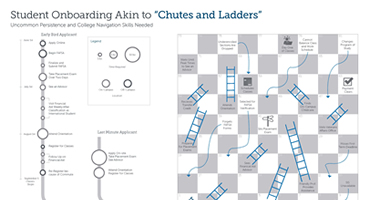New Report Demonstrates Pandemic’s Impact on Transfer Enrollment
Title: COVID-19 Transfer, Mobility, and Progress Report
Source: National Student Clearinghouse Research Center
As COVID-19 continues to affect higher education, National Student Clearinghouse has released a new report outlining the pandemic’s effect on student transfer and mobility. The report indicates that between July 2020 and June 2021 transfer student enrollment fell overall by 8.4 percent, compared to the previous academic year. Report analysis focuses on three areas: upward transfer pathways, post-transfer persistence, and transfer enrollment at minority-serving institutions (MSIs). Findings from the analysis are summarized below:
Overall transfer enrollment fell most among male students (-12.1 percent) and Black students (-12.9 percent) compared to the previous academic year.
- Total upward transfer enrollment at highly selective institutions increased during the academic year across race, ethnicity, and gender.
- Upward transfer enrollment declined across competitive and less competitive institutions and marked gaps in enrollment across race, ethnicity, and gender. For example, spring 2021 upward transfer enrollment increased most among Latinx students, however, enrollment was concentrated at competitive and less competitive institutions.
- Among the estimated 1.4 million students who transferred for fall 2020, approximately 19.3 percent of students stopped out for spring 2021.
- In fall 2020, drops in persistence rates among transfer students occurred most at community colleges and private, non-profit four-year institutions. Across the academic year, persistence rates also dropped among male students and students transferring to highly selective institutions.
- Transfer enrollment at Historically Black Colleges and Universities remained relatively the same in comparison to the 2019-20 academic year, while Hispanic-Serving Institutions had steeper declines in transfer enrollment (-11.8 percent) than the previous year. Persistence rates among transfer students also dropped for MSIs across the 2020-21 academic year.
Click here to read the report.
—Danielle Melidona
If you have any questions or comments about this blog post, please contact us.


